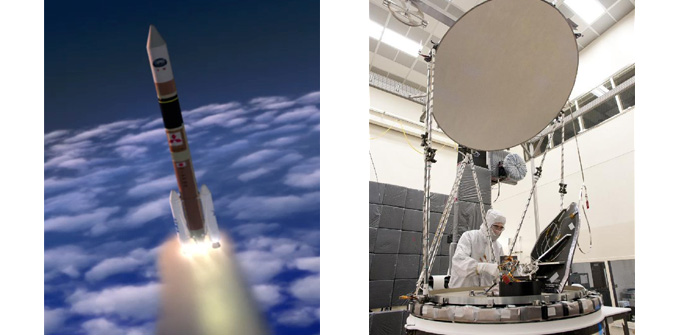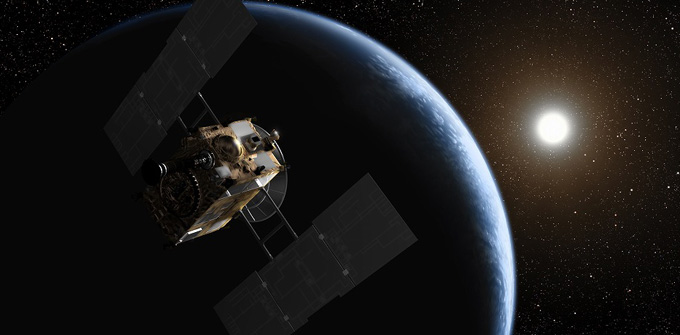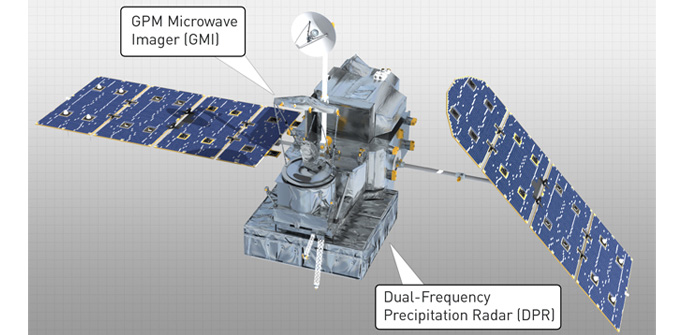Japanese scientists and engineers have completed construction on a new instrument designed to take 3-D measurements of the shapes, sizes and other physical characteristics of both raindrops and snowflakes.
The radar will be shipped from Japan to NASA’s Goddard Space Flight Center, Greenbelt, Maryland, to be integrated into an upcoming NASA Earth science satellite.
After extensive testing, the satellite will then be shipped to Japan for launch in 2014.
Designed and built by the Japan Aerospace Exploration Agency (JAXA) and Japan’s National Institute of Information and Communications Technology, the Dual-frequency Precipitation Radar is one of two instruments that will fly aboard NASA’s Core Observatory for the Global Precipitation Measurement (GPM) mission.
The radar instrument will provide insights into a storm’s physical structures.
Its data will not only expand our knowledge of precipitation science, the Earth’s water cycle, and the supply of fresh water around the world, it also will aid forecasts of hurricanes, floods and other natural disasters.
The instrument is the first space-borne radar to use both Ku and Ka bands in the microwave range of frequencies to study precipitation.
It obtains three-dimensional information about precipitation droplets by measuring reflected energy by these particles at different heights within the clouds.
The ‘dual’ in the radar’s name refers to the way the two microwave bands of the instrument complement each other, allowing the radar to provide new information about the size distribution of raindrops and snowflakes as they fall.

After the instrument arrives at Goddard in March, engineers will integrate both the radar and another instrument, the NASA-supplied GPM Microwave Imager (GMI), onto the main body or ‘bus’ of the mission’s Core Observatory.
“Knowing the global distribution of precipitation is critical for predicting weather and for understanding the roles of water in defining the Earth’s climate,” said Michael Freilich, director of NASA’s Earth Science Division in the Science Mission Directorate.
“The measurements from GPM will provide unique insight into the atmospheric processes that generate and control precipitation, as well as the impacts of rain and snowfall on the availability of fresh water for all of the Earth’s inhabitants.”
GPM’s three-dimensional observations of rain and snow will usher in a new generation of space-based observations of global precipitation, a key element of the Earth’s climate.
The mission will extend to global scales the space-based measurement of precipitation initiated by the NASA-JAXA Tropical Rainfall Measuring Mission (TRMM) in 1997.
“This mission will provide rain and snow measurements of unprecedented accuracy worldwide, every three hours,” said Arthur Hou, GPM mission scientist at Goddard.
“This joint mission builds on the continued success of TRMM and our strong collaboration with JAXA.”
“The GPM Core Observatory will serve as a new standard to unify precipitation measurements from the GPM constellation of satellites, which includes missions by the Centre National d’Etudes Spatiales (CNES) of France, the Indian Space Research Organization (ISRO), the European Organization for the Exploitation of Meteorological Satellites (EUMETSAT) and other U.S. and international partners operating both research and operational satellites.”
This international network of satellites is part of the GPM mission concept in which they work in concert providing next-generation global observations of rain and snow.
The NASA Core Observatory is the centerpiece of this constellation.
JAXA official site: www.jaxa.jp
NASA official site: www.nasa.gov










